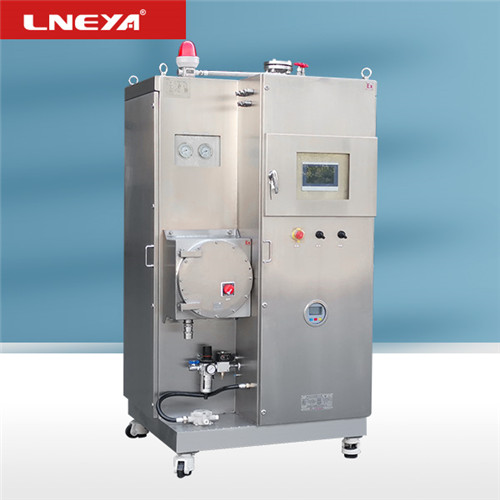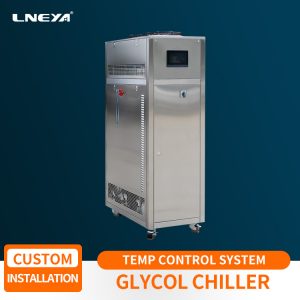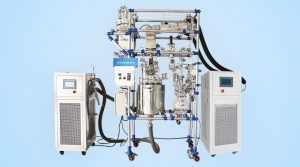Solution to oil spill of reactor cooling and heating circulator
When we use some reactor cooling and heating circulators, we will find that the system pressure fluctuates up and down as the temperature rises, and the oil tank is overflowing. So what are the reasons for these conditions in the cooling and heating circulators and how to solve them?

There are three reasons for the above situation: residual water in the pipeline or water in the heat-conducting oil component causes oil-water mixing, water vaporization at high temperature causes unstable system pressure, and oil spills in the fuel tank; the system pressure is normal at room temperature, and when the temperature increases When it rises (above 80 degrees), the system pressure gauge shakes up and down, and when there is a large amount of white smoke in the fuel tank or the heat transfer oil overflows, it can be judged that the oil and water are mixed.
Method of dehydrating boiling oil:
Remove the upper cover of the machine and open the fuel tank cover. Set the temperature to about 80 degrees first, and then combine the system pressure gauge. When the system pressure is stable, increase it by one or two degrees. If the system pressure drops again at this time, the temperature should be lowered again immediately. After the pressure stabilizes, increase it once or twice. In this way, the oil temperature is controlled at about 130 degrees under the condition of stable pressure (not more than 130 degrees, otherwise the exhaust solenoid valve from the system to the fuel tank will be closed, causing the system water vapor to fail to evaporate through the fuel tank, and the temperature will be too high. The heat transfer oil is oxidized too fast and affects its service life.) Let it run for 1-2 hours for dehydration and boiling. After the system pressure is completely stabilized, the temperature can be raised again. If there is no change in the system pressure midway, the fuel tank lid can be closed normal production. (Note: The temperature can be set directly next time the machine is turned on, no need to cook oil again.)
The expansion volume of the fuel tank is not enough, causing the oil to overflow. The system pressure did not change significantly with the increase in temperature, but the oil level of the oil tank liquid level indicator tube was continuously rising. After overflow, it can be judged that the oil tank is too small and the expansion volume is not enough. Solution: Replace the fuel tank with a larger size.
The filling of heat-conducting oil exceeds the normal level of the fuel tank, which leads to insufficient expansion space of the fuel tank and the heat-conducting oil overflows. Solution: Drain the excess heat transfer oil from the oil drain to the normal level.
Related recommendations
-
-
How to complete the temperature control equipment for the isolation reactor?
1554The reactor is a commonly used reactor in pharmaceutical and chemical production. The isolation reactor temperature control equipment is realized by controlling two doors, namely the heating water valve and the cooling water valve. The mixing of t...
View details -
How is the refrigerant installed in the vocs condensing unit?
1937The vocs condensing equipment is LNEYA's equipment for condensing adsorption of various vocs gases. Among them, the refrigerant of vocs condensing equipment is also indispensable. So, how should the refrigerant be treated? For various refrigeratio...
View details -
How to choose the optimal chiller solution?
1436Choosing a water chiller is like finding a "target" for an enterprise's production equipment. It must not only be "like-minded", but also "be well-matched". The one that suits you is the best. If the choice is not good, either the cooling effect ...
View details
 LNEYA Industrial Chillers Manufacturer Supplier
LNEYA Industrial Chillers Manufacturer Supplier












